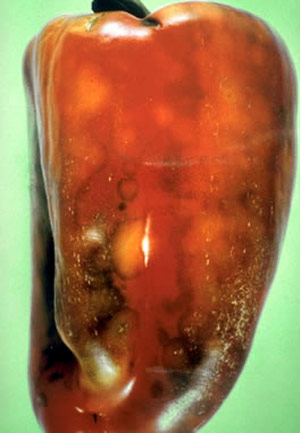|
|
Capsicum crops in all Australian States have sustained major production losses from Tospoviruses over the last 12 or so years. Capsicum chlorosis virus (CaCV) and Tomato spotted wilt virus (TSWV), two of the species of tospoviruses found in Australia, were studied in a project with two major objectives :
The increasing importance of tospoviruses in Australian capsicum crops was addressed in this project by seeking germplasm resistant to CaCV. Incorporating this resistance into bell capsicum lines in combination with the Tsw gene to provide broad protection against tospoviruses. This report details about the identification of resistances to Tospoviruses affecting capsicums in Australia and the integration of resistance into capsicum breeding material. Research identified a single gene for natural Capsicum chlorisis virus resistance in wild capsicum stock. Lines with this gene were cross-bred with lines that had a natural resistance to tomato spotted wilt virus, creating cultivars that demonstrate resistance to both viruses.
Findings : Tospoviruses belong to the virus family Bunyaviridae many of which are transmitted by mosquitoes and other insects. All viruses within the family that infect plants are assigned to the Tospovirus genus. The genus name is derived from the type species, Tomato spotted wilt virus (TSWV), which was first found and described from Australia around 1920 . There are currently 16 recognised or proposed tospovirus species with three being recorded in Australia – TSWV, Capsicum chlorosis virus (CaCV) and Iris yellow spot virus (IYSV).
Acknowledgements : The advice and assistance of Dr John Thomas and Lee McMichael is gratefully acknowledged. Staff from Bowen Crop Monitoring and Crop Tech Bundaberg assisted with the virus disease surveys. This project was funded by Horticulture Australia Ltd through the National Vegetable R&D Levy and the Department of Primary Industries and Fisheries, Queensland. The Australian Government provides matched funding for all HAL’s R&D activities. |
||||||||
|

